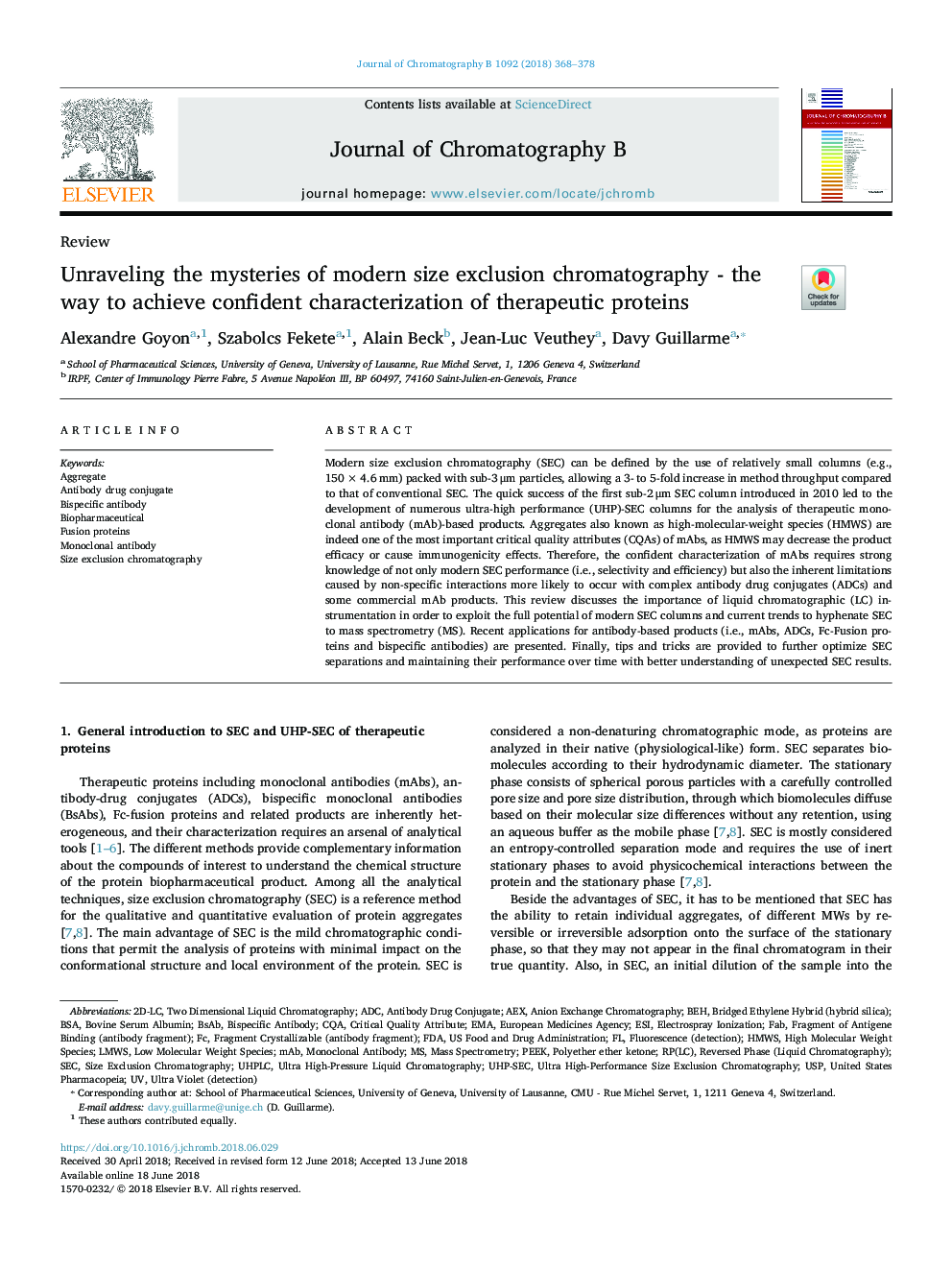| Article ID | Journal | Published Year | Pages | File Type |
|---|---|---|---|---|
| 7614853 | Journal of Chromatography B | 2018 | 11 Pages |
Abstract
Modern size exclusion chromatography (SEC) can be defined by the use of relatively small columns (e.g., 150â¯Ãâ¯4.6â¯mm) packed with sub-3â¯Î¼m particles, allowing a 3- to 5-fold increase in method throughput compared to that of conventional SEC. The quick success of the first sub-2â¯Î¼m SEC column introduced in 2010 led to the development of numerous ultra-high performance (UHP)-SEC columns for the analysis of therapeutic monoclonal antibody (mAb)-based products. Aggregates also known as high-molecular-weight species (HMWS) are indeed one of the most important critical quality attributes (CQAs) of mAbs, as HMWS may decrease the product efficacy or cause immunogenicity effects. Therefore, the confident characterization of mAbs requires strong knowledge of not only modern SEC performance (i.e., selectivity and efficiency) but also the inherent limitations caused by non-specific interactions more likely to occur with complex antibody drug conjugates (ADCs) and some commercial mAb products. This review discusses the importance of liquid chromatographic (LC) instrumentation in order to exploit the full potential of modern SEC columns and current trends to hyphenate SEC to mass spectrometry (MS). Recent applications for antibody-based products (i.e., mAbs, ADCs, Fc-Fusion proteins and bispecific antibodies) are presented. Finally, tips and tricks are provided to further optimize SEC separations and maintaining their performance over time with better understanding of unexpected SEC results.
Keywords
Ultra high-pressure liquid chromatographyHMWSBsAbUSPAEx2D-LCUHPLCBiopharmaceuticalFDAEMACQAADCSECHigh molecular weight speciesESImAbBSAbovine serum albuminMonoclonal antibodybispecific antibodyEuropean Medicines agencyUS Food and Drug AdministrationUnited States PharmacopeiaAggregateBehPEEKMass spectrometryFabCritical quality attributeFusion proteinspolyether ether ketoneSize exclusion chromatographyanion exchange chromatographyTwo dimensional liquid chromatographyAntibody drug conjugateelectrospray ionization
Related Topics
Physical Sciences and Engineering
Chemistry
Analytical Chemistry
Authors
Alexandre Goyon, Szabolcs Fekete, Alain Beck, Jean-Luc Veuthey, Davy Guillarme,
